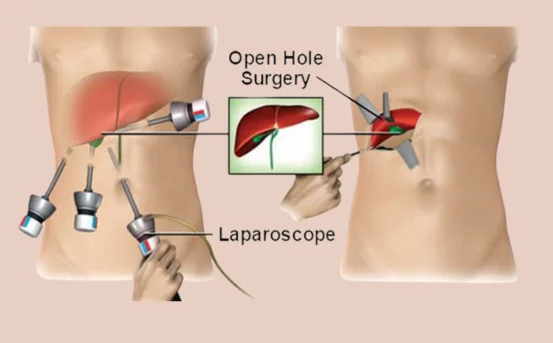Pituitary tumors are abnormal enlargements that form in the pituitary gland. an extremely small, but crucial hormone-producing organ that is located near the base of the brain. Although most pituitary tumors can be considered benign (non-cancerous) however, their position can cause major hormonal imbalances or pressure on brain structures nearby which may require removal surgically.
What is Pituitary Tumor Surgery?
Understanding of types of pituitary tumor surgery
The pituitary surgery is an operation performed by a doctor to remove the pituitary gland. The aim is to remove or minimize the tumor while keeping the normal functioning of the gland and its surrounding structures. Surgery is typically suggested for:
-
The tumors that secrete hormones (like prolactinomas, growth hormone-secreting Adenomas)
-
Tumors that cause vision problems or pressure-related results
-
Tumors that are not responsive to radiation or medication
Why Surgery is Needed for Pituitary Tumors?
Some pituitary tumors do not require surgery. Some are benign and not noticeable. However, surgery is required in the following situations:
-
It is pressing down on the optic nerve and can cause changes in vision or loss of sight.
-
There’s excess hormone production which can lead to acromegaly and Cushing’s disease, and other endocrine diseases.
-
It is growing quickly.
-
Medicines fail to manage the symptoms of the tumor
Types of Pituitary Tumor Surgery
The are two primary kinds that pituitary tumor surgeries, both of which has distinct risks, indications and benefits.
1. Endoscopic Transsphenoidal Surgery (ETS)
The endoscopic procedure known as transsphenoidal procedure is the most popular and preferred technique for the removal of pituitary tumors. This is especially true in cases where the tumour is not large or restricted in the area of sella turcica (the bony cavity that houses the pituitary gland).
Key Features:
-
Very minimally intrusive
-
It is done through the nose as well as the sphenoid sinus.
-
Utilizes a high-definition endoscope for visualization
-
Recovery time is shorter and there are less problems
Best Suited For:
-
Pituitary tumors of small to medium size
-
Adenomas that are not invasive
-
Hormone-secreting tumors
Risks:
-
CSF (cerebrospinal fluid) leak
-
Sinus infections
-
Hormonal imbalance (if pituitary glands that are normally healthy are damaged)
Recovery:
-
A hospital stay of 1-3 days
-
Normal activities resume within 2-4 weeks
2. Transcranial Surgery (Craniotomy)
This is a more conventional and more invasive procedure, which involves the removal of a part of the skull to gain access to the tumor.
Key Features:
-
It is required when the tumor is massive and irregular or has encroached into adjacent brain structures.
-
Provides a direct visual representation of complicated cases.
Best Suited For:
-
Massive pituitary tumors
-
Tumors that have significant brain or optic nerve involvement
-
Recurrent tumors not accessible via nasal route
Risks:
-
Greater risk of complications due to access to the brain that is open
-
A longer recovery time
-
Possibility of neurological impairments
Recovery:
-
Hospitalization of 7 to 7.5 days
-
Recovery from a full-blown illness can be a few months
Other Treatment Options After Surgery
Pituitary tumors may not be completely removed by surgery. Based on the specific case, adjunct therapies could be needed:
Radiation Therapy
This is the case when:
-
The tumor has not been completely eliminated
-
Risk of recurring infection is high
-
Surgery isn’t an option.
Medication
Certain hormone-secreting tumors are well-responded to treatments such as:
-
Dopamine antagonists (e.g. cabergoline to treat prolactinomas)
-
Somatostatin Analogs (e.g. Octreotide for Acromegaly)
Diagnosing Pituitary Tumors
Prior to surgery, an accurate diagnosis is vital. Common procedures include:
-
MRI scanning of the brain (to determine the size and location of the tumor)
-
Tests for blood hormones (to find out if there are any the presence of hormones that are not normal)
-
Tests of visual field (to determine if there is optical nerve compression)
Symptoms of Pituitary Tumors
Being aware of the signs early could improve the outcome. The most common signs are:
-
Headaches
-
Vision issues (blurred or double vision)
-
Weight gain/loss that is not explained.
-
Menstrual irregularities, or infertility
-
Anomalies in growth (in feet, hands or facial characteristics)
-
Depression and fatigue
Conclusion
The selection types of pituitary tumor surgery is contingent on the size of the tumor, location, type, and the general health of the patient. Transsphenoidal endoscopic surgery is considered to be the most effective treatment for many cancers due to its minimal invasiveness and speedier recovery. However, transcranial surgeries are crucial for larger or complicated tumors.
Consult a qualified surgeon for neurology as well as an an endocrinologist is crucial to create an individual treatment plan that gives the most effective outcome with most minimal issues.























